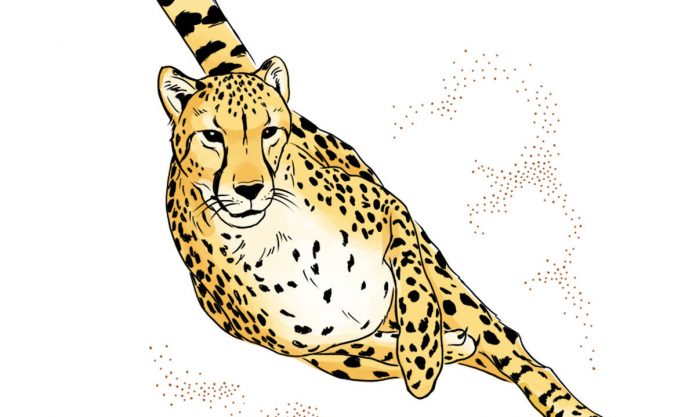The world’s fastest land animal, the cheetah, is a successful hunter not only because it is quick, but also because it can hold an incredibly still gaze while pursuing prey. For the first time, researchers have investigated the cheetah’s extraordinary sensory abilities by analyzing the speedy animal’s inner ear, an organ that is essential for maintaining body balance and adapting head posture during movement in most vertebrates. The study, published today in the journal Scientific Reports and led by researchers at the American Museum of Natural History, finds that the inner ear of modern cheetahs is unique and likely evolved relatively recently.
“If you watch a cheetah run in slow motion, you’ll see incredible feats of movement: its legs, its back, its muscles all move with such coordinated power. But its head hardly moves at all,” said lead author Camille Grohé, who conducted this work during a National Science Foundation and Frick Postdoctoral Fellowship in the Museum’s Division of Paleontology. “The inner ear facilitates the cheetah’s remarkable ability to maintain visual and postural stability while running and capturing prey at speeds of up to 65 miles per hour. Until now, no one has investigated the inner ear’s role in this incredible hunting specialization.”
In the inner ear of vertebrates, the balance system consists of three semicircular canals that contain fluid and sensory hair cells that detect movement of the head. Each of the semicircular canals is positioned at a different angle and is especially sensitive to different movements: up and down, side-to-side, and tilting from one side to the other.
The researchers used high-resolution X-ray computed tomography (CT) at the Museum’s Microscopy and Imaging Facility, the National Museum of Natural History in Paris, and the Biomaterials Science Center of the University of Basel in Switzerland to scan the skulls of 21 felid specimens, including seven modern cheetahs (Acinonyx jubatus) from distinct populations, a closely related extinct cheetah (Acinonyx pardinensis) that lived in the Pleistocene between about 2.6 million and 126,000 years ago, and more than a dozen other living felid species. With those data, they created detailed 3-D virtual images of each species’ inner ear shape and dimensions.















